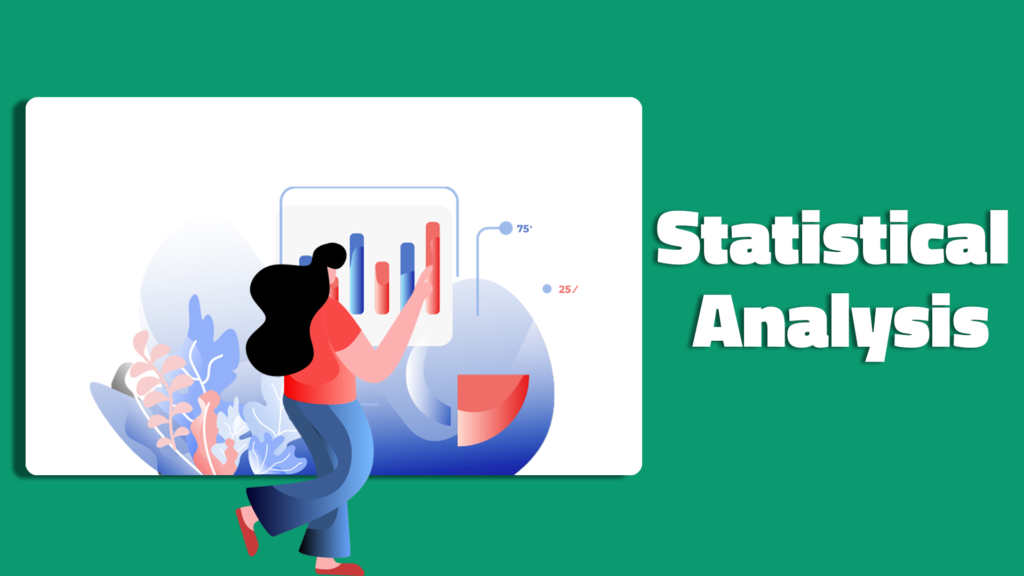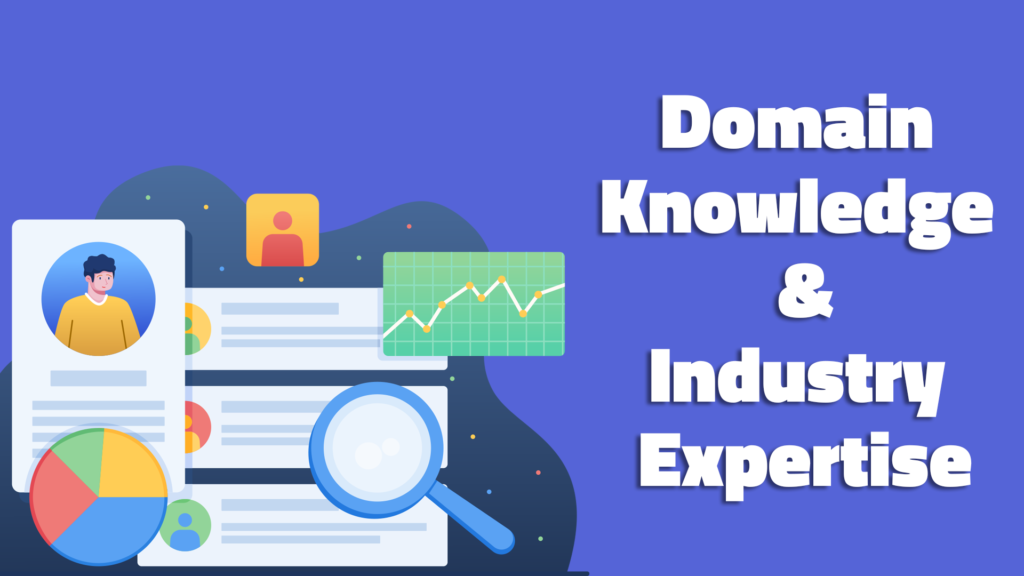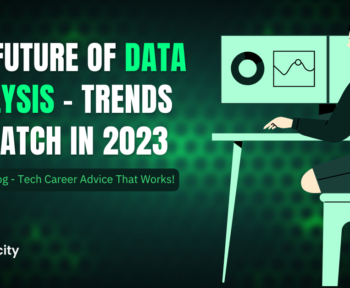In today’s data-driven world, businesses are increasingly relying on data analytics to help them make strategic decisions. As a result, the demand for Data Analyst Skills is on the rise. The field of data analytics is complex and constantly evolving, and it can be challenging for new entrants to know where to start.
In this article, we outline five key skills that every data analyst needs to succeed.
1. Technical Proficiency

To be an effective data analyst, technical proficiency is one of the most essential Data Analyst skills. This involves having a strong understanding of the tools and technologies used for data analysis. There are several areas of technical proficiency that data analysts need to master, including programming languages, data visualization tools, and database management.
Technical proficiency is a fundamental requirement for data analysts to be able to carry out their duties. Data analysts must be well-versed in programming languages such as Python or R, which are commonly used to clean, manipulate, and analyze data. These languages enable data analysts to effectively work with large datasets, extract meaningful insights, and communicate their findings to stakeholders.
Programming Languages
Data analysts should be proficient in at least one programming language, such as Python or R. These languages are commonly used to clean, manipulate, and analyze data, and being proficient in them is essential for success in the field of data analytics. Proficiency in programming languages allows data analysts to automate repetitive tasks, perform complex calculations, and build custom solutions tailored to specific business needs.
Python is a popular programming language among Data Analyst Skills due to its simplicity and versatility. It can be used for a wide range of tasks, from data cleaning and manipulation to machine learning and artificial intelligence. R, on the other hand, is a specialized language designed specifically for statistical computing and data visualization.
Data Visualization Tools
Being able to effectively present data through visualization is another crucial Data Analyst Skills. Some commonly used data visualization tools include Tableau, Power BI, and QlikView. Data analysts should know how to use these tools to create clear and concise visual representations of data.
Data visualization is an important aspect of data analysis as it enables data analysts to communicate their findings to stakeholders in a clear and concise manner. Visualization tools allow data analysts to create interactive dashboards, charts, and graphs that are easy to understand and interpret.
Database Management
Data analysts also need to have a thorough understanding of database management. The ability to effectively manage and manipulate large datasets is a crucial for Data Analyst Skill. Familiarity with SQL, or Structured Query Language, is particularly important in this regard.
SQL is a powerful language used for managing relational databases. It allows data analysts to retrieve, update, and manipulate data stored in databases. SQL is widely used in the field of data analytics, and proficiency in this language is essential for data analysts to effectively manage and analyze large datasets.
In conclusion, technical proficiency is a crucial Data Analyst Skill to effectively carry out their duties. Proficiency in programming languages, data visualization tools, and database management is essential for data analysts to effectively manipulate and analyze data, extract meaningful insights, and communicate their findings to stakeholders.
2. Statistical Analysis

Data analysts must be able to apply statistical methods to interpret and draw conclusions from data. This involves understanding both descriptive and inferential statistics, as well as hypothesis testing.
Statistical analysis is a critical Data Analyst Skill. It helps in summarizing and interpreting data, and drawing meaningful conclusions from it. Let’s take a closer look at the different types of statistical analysis:
Descriptive Statistics
Descriptive statistics help to summarize and describe data. These types of statistics can be used to find the mean, median, and mode of a dataset, as well as other measures of central tendency and dispersion. A data analyst should be able to use descriptive statistics to help understand the characteristics of a dataset.
For example, if a data analyst is working with a dataset that contains information about the salaries of employees in a company, they can use descriptive statistics to calculate the average salary, the median salary, and the range of salaries. This information can help the analyst understand the salary distribution in the company.
Inferential Statistics
Inferential statistics are used to draw conclusions about a population based on a sample. Data analysts should have a strong understanding of inferential statistics in order to make predictions based on data.
For example, if a data analyst is working with a sample of customers who have purchased a product, they can use inferential statistics to make predictions about the entire population of customers who might be interested in purchasing the product. By using inferential statistics, the analyst can estimate the probability of a customer purchasing the product, based on the characteristics of the sample.
Hypothesis Testing
Hypothesis testing is used to test whether two or more groups of data are significantly different from each other. Data analysts should be able to perform hypothesis tests to determine whether there is a significant difference between two groups of data.
For example, if a data analyst is working with a dataset that contains information about the sales of two different products, they can use hypothesis testing to determine whether there is a significant difference in the sales of the two products. By performing a hypothesis test, the analyst can determine whether the difference in sales is due to chance or whether it is statistically significant.
Overall, statistical analysis is a crucial skill for data analysts. By understanding descriptive and inferential statistics, as well as hypothesis testing, data analysts can draw meaningful conclusions from data and make informed decisions.
3. Critical Thinking and Problem Solving

Critical Thinking and Problem Solving is a must have Data Analyst Skill. This is a crucial aspect of their job as they are responsible for interpreting and analyzing complex data sets to provide insights that can help businesses make informed decisions.
Having strong critical thinking and problem-solving skills is essential for data analysts to succeed in their role. These skills enable them to identify patterns and trends in data, develop actionable insights, and troubleshoot data issues.
Identifying Patterns and Trends
Identifying patterns and trends in data is a fundamental aspect of a data analyst’s job. Data analysts should be able to use data visualization tools to identify patterns and trends in data. They need to be able to recognize patterns that are not immediately apparent and have the ability to analyze data from multiple sources to identify trends. This Data Analyst Skill is particularly important when working with large data sets, where patterns and trends may not be immediately visible.
For example, a data analyst working for a retail company may analyze sales data to identify patterns in customer behavior. They may use data visualization tools to create charts and graphs that show sales trends over time, identify which products are selling well, and determine which factors are influencing customer behavior.
Developing Actionable Insights
Data analysts should be able to use data to develop actionable insights that can be applied to business problems. This involves synthesizing data from multiple sources and translating it into insights that can be easily understood.
For example, a data analyst working for a healthcare company may analyze patient data to identify trends in patient outcomes. They may use this data to develop insights that can help healthcare providers improve patient care. These insights may include recommendations for changes in treatment protocols or suggestions for new medical interventions.
Troubleshooting Data Issues
Data analysts need the ability to identify and fix data issues that can impact the accuracy of their analysis. This involves being able to identify errors in data, clean and transform data, and troubleshoot analysis issues.
For example, a data analyst working for an e-commerce company may encounter data quality issues when analyzing sales data. They may need to identify and correct errors in the data, such as missing or incorrect data points, to ensure that their analysis is accurate. They may also need to clean and transform the data to make it usable for analysis.
In conclusion, critical thinking and problem-solving skills are essential Data Analyst Skill to succeed in their role. By being able to identify patterns and trends in data, develop actionable insights, and troubleshoot data issues, data analysts can provide valuable insights that can help businesses make informed decisions.
4. Effective Communication
Data analysts must be able to effectively communicate their findings to stakeholders. This Data Analyst Skill involves data storytelling, presenting complex information, and collaborating with cross-functional teams. Effective communication is a critical skill for data analysts, as it ensures that their insights are understood and implemented by decision-makers.
Data Storytelling
Data storytelling involves using data to tell a story. A data analyst should be able to use data visualization tools and other techniques to create compelling narratives that help stakeholders understand the insights they’ve uncovered. For example, a data analyst working for a retail company may use data visualization tools to show how sales have been impacted by different marketing campaigns. By presenting this information in a visually appealing and easy-to-understand way, the data analyst can help stakeholders make informed decisions about future marketing strategies.
In addition to data visualization tools, data analysts may also use other techniques to tell a story with data. For example, they may use case studies or real-world examples to illustrate their findings. By using these techniques, data analysts can help stakeholders connect with the data and understand its implications for the business.
Presenting Complex Information
Data analysts often need to present complex information to stakeholders who may not have a technical background. A good skilled data analyst should be able to communicate their insights in a clear and concise manner. This may involve breaking down complex concepts into simpler terms, or using analogies to explain technical concepts in a way that is easy to understand.
For example, a data analyst working for a healthcare company may need to explain the results of a clinical trial to executives who do not have a medical background. In this case, the data analyst may use analogies to explain the results in a way that is easy to understand. They may compare the results to a car engine, for example, explaining how different components work together to produce a desired outcome.
Collaborating with Cross-Functional Teams
Data analysts often work with cross-functional teams, including business analysts, product managers, and executives. Being able to collaborate effectively with these teams is important Data Analyst Skill for ensuring that data insights are integrated into business strategy. Effective collaboration involves clear communication, active listening, and a willingness to work together to achieve common goals.
For example, a data analyst working for a technology company may collaborate with product managers to develop a new feature for a software product. The data analyst may provide insights into user behavior and preferences, while the product manager may provide insights into the product roadmap and business strategy. By working together, the team can develop a feature that meets the needs of both users and the business.
In conclusion, effective communication is a critical Data Analyst Skill. By using data storytelling, presenting complex information in a clear and concise manner, and collaborating effectively with cross-functional teams, data analysts can ensure that their insights are understood and implemented by decision-makers.
5. Domain Knowledge and Industry Expertise

Being a data analyst is not just about crunching numbers and analyzing data. It is also about understanding the business domain and industry trends to provide valuable insights and recommendations. A data analyst needs to have a strong understanding of the business domain they are working in, as well as staying current with industry trends and adapting to new technologies and techniques.
Understanding Business Objectives
Understanding the business objectives is crucial for a data analyst. It is not enough to just analyze data, but to align the analysis with the broader objectives of the business. This Data Analyst Skill involves understanding the goals of the business and how data analysis can help to achieve those goals. For example, if a business wants to increase sales, a data analyst can analyze customer behavior to identify patterns and trends that can help the business to target their marketing efforts more effectively.
Moreover, understanding the business objectives can help a data analyst to prioritize their analysis. By focusing on the areas that are most important to the business, a data analyst can provide insights that have a greater impact on the bottom line.
Staying Current with Industry Trends
The field of data analytics is constantly evolving, and data analysts need to stay up-to-date with the latest Data Analyst Skills, trends and techniques. This involves attending industry conferences, reading industry publications, and participating in online communities. By staying current with industry trends, a data analyst can identify new tools and techniques that can improve their analysis and provide more valuable insights.
Furthermore, staying current with industry trends can help a data analyst to anticipate changes in the industry. For example, if a new technology or tool is emerging, a data analyst can start learning about it and prepare for its adoption in the industry.
Adapting to New Technologies and Techniques
Data analysts need to be adaptable and able to work with new technologies and techniques as they emerge. This involves being willing to learn new Data Analyst Skills and stay up-to-date with the latest developments in the field of data analytics. For example, if a new tool or technique is introduced, a data analyst should be willing to learn how to use it and incorporate it into their analysis.
Moreover, adapting to new technologies and techniques can help a data analyst to improve their analysis and provide more valuable insights. By using new tools and techniques, a data analyst can identify patterns and trends that were not visible before, and provide recommendations that can have a greater impact on the business.
In conclusion, domain knowledge and industry expertise are essential Data Analyst Skills. By understanding the business domain, staying current with industry trends, and adapting to new technologies and techniques, a data analyst can provide valuable insights and recommendations that can help the business to achieve its objectives.
Conclusion
Mastering the five key Data Analyst Skills outlined in this article is essential for anyone looking to become a successful data analyst. By developing technical proficiency, statistical analysis skills, critical thinking and problem-solving abilities, effective communication techniques, and business domain expertise, data analysts can make meaningful contributions to their organizations. With demand for skilled data analysts on the rise, there’s never been a better time to enter this exciting and dynamic field and learn Data Analyst Skills.





